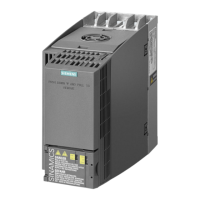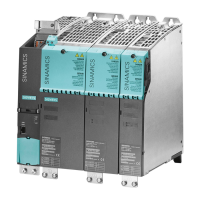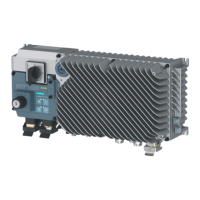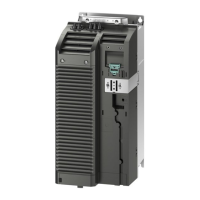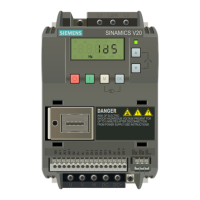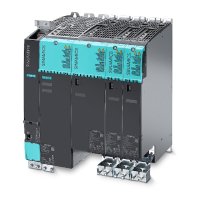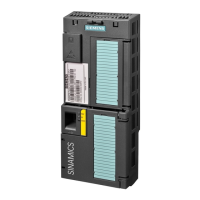Drive Dimensioning
Engineering Information
SINAMICS Engineering Manual – November 2015
Ó Siemens AG
511/528
10.3 Drives with constant load torque
Drives for hoisting gear or extruders are typical examples of drives with a constant load torque M
L
= const. Constant-
torque drives require a virtually constant torque over a defined speed setting range. They may also need to overcome
breakaway torques or acceleration torques of limited duration. As a general rule, therefore, converters with overload
capability are required for such applications.
Speed range below rated speed (base speed range or constant flux range)
Self-cooled motors are equipped with a shaft-mounted fan. As a result, they cannot produce their full rated torque
over the entire base speed range n < n
rated
in continuous operation, as the cooling effect of the fan is reduced in
proportion to the decrease in speed. For this reason, torque or output power derating of a magnitude determined by
the minimum speed requirement or the speed range requirement (red limit curves in the diagram above) must be
applied in the case of self-cooled motors.
Forced-cooled motors are equipped with a separately driven fan and its cooling effect is thus largely independent of
speed over the entire base speed range n < n
rated
. Accordingly, the degree of torque derating required for these
motors is relatively low or even non-existent depending on the requirements of minimum speed and / or speed range
(blue limit curves in the diagram above).
Speed range above rated speed (field-weakening range)
In operation at frequencies above rated frequency, the motors are operated in the field-weakening range. In this
range, the useful torque M of asynchronous motors decreases approximately in proportion to the frequency ratio
f
rated
/f. The output power remains constant, as illustrated in the diagram on the following page.
Since the stalling torque M
k-reduced
on asynchronous motors in the field-weakening range decreases in proportion to
the ratio (f
rated
/f)
2
, the margin between the useful torque M and the stalling torque M
k-reduced
narrows as the frequency
increases. In order to reliably prevent the motor from stalling, the margin between the required torque M and the
stalling torque M
k-reduced
should be at least 30 % at the most extreme operating point in the field-weakening range.
It is also important to note that the mechanical limit speed n
max
of the motor must not be exceeded in the field-
weakening range.
Selection of a suitable converter or Motor Module for drives with constant load torque
The combination of converter or Motor Module and motor for drives with constant load torque should be selected
such that an overload of approximately 50 % is possible for about 60 seconds based on the continuously permissible
torque M. This generally provides a sufficient reserve to cover brief periods of breakaway or acceleration torque.
This condition is fulfilled if the base load current I
H
for a high overload of the converter or Motor Module is selected to
be at least as high as the motor current I
Mot
at the continuously permissible torque M required at the least favorable
load point.
In the base speed range (constant flux range with rated flux), the motor current I
Mot
can be calculated with acceptable
accuracy for typical asynchronous motors for any load point according to the following formula:
2
2
2
ratedAct
rated
Mot
I
M
M
II
-
×
÷
÷
ø
ö
ç
ç
è
æ
+=
m
.
Key to formula:
· I
μ
Magnetization current (no-load current) of motor. This is calculated from the rated current
I
Mot-rated
of the motor and the rated power factor cosφ
Mot-rated
of the motor as follows
ratedMotratedMot
II
--
-=
j
m
cos1
.
· M Motor torque at the load point under consideration
· M
rated
Rated motor torque
· I
Act-rated
Rated active current of motor. This is calculated from the rated current
I
Mot-rated
of the motor and the magnetization current I
μ
of the motor as follows
22
m
III
ratedMotratedAct
-=
--
.

